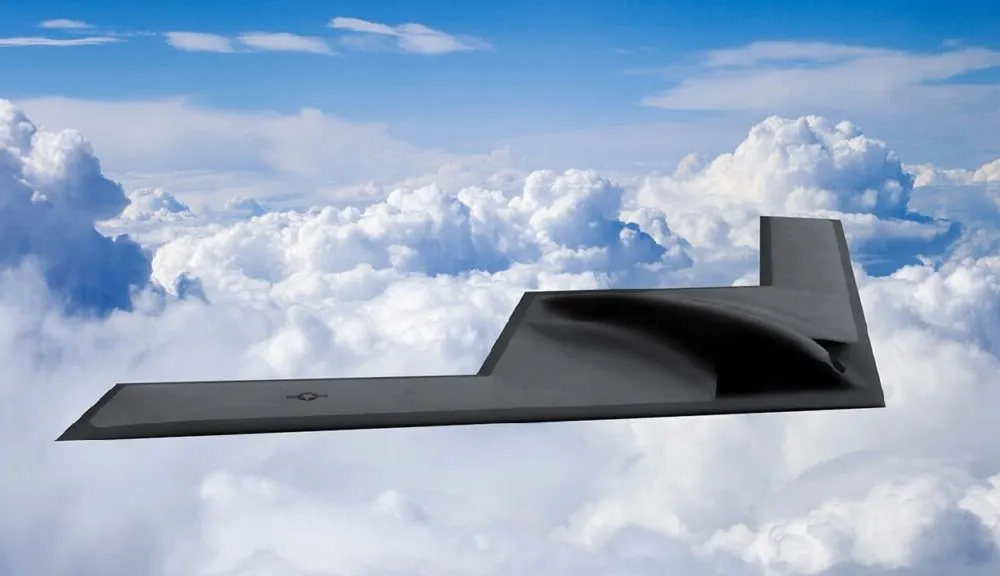News
U.S. Air Force to restructure Pacific plans around new B-21 bomber

The Air Force is changing its approach for Pacific operations around the nascent B-21 bomber, which will fly and carry out more tasks than its predecessors, officials confirmed. The bomber will assist the air force in increasing its operations in the region, they say, and even reduce the service’s great vulnerability in a conflict with China: too many jets lying dormant on too few island runways.
“It’s going to have fantastic sensors and of course it will have lots of options for weapons to be employed as well as other effects that it can create,” Gen. Kenneth S. Wilsbach, commander of Pacific Air Forces, said Monday at the Mitchell Institute. “The pilot-to-vehicle interface on that aircraft is a leap in capability compared to the B-2, and so the speed at which the crew can cycle through the threats and then get weapons on target is significantly faster.”
The bomber’s ability to act as an airborne data hub is an additional perk, Wilsbach said. He said the B-21 will act as an organization hub in larger, joint all-domain command-and-control schemes, assisting in both collecting and sending data to nearby jets and drones.
The “network between the B- 21 formations that are out there” will be “a game-changer from the standpoint of being able to get ordnance on targets faster at a rate that the that the enemy, whoever that might be, will have a hard time responding to in a coherent way,” the general confirmed.
The B-21 was built to be a workhorse, Wilsbach said.
“The aircraft was designed to be a daily flier,” he said. “It’s maintenance- friendly. You can quickly repair it when it has a break and get it back up in the air and so you don’t have extended periods of time when it’s on the ground.
The plane only represents part of the process. The Air Force is working to move parts and technicians to more places to allow them to be on hand when required, Brig. Gen. Kenyon Bell, the director of logistics and engineering for Air Force Global Strike Command, told Defense One.
“So, the tyranny of distance is certainly going to come into play. But our ability to be able to forward-position assets, so that if we had to go anywhere on the globe, that we would have assets available to be able to employ our weapons when we need them” eases the problem, Bell said.
The service’s recent 2024 budget request includes several hundred million dollars for prepositioned equipment, Wilsbach said.
“One of the aspects of actual combat employment that’s difficult to do is logistics, especially logistics that’s under attack,” he said. “Our thought is, if we preposition some of the equipment that we might need, especially in the early days of a potential conflict, you relieve some of that burden to get logistics in there immediately. And so we’re already beginning to preposition.”
Terry A. Hurlbut has been a student of politics, philosophy, and science for more than 35 years. He is a graduate of Yale College and has served as a physician-level laboratory administrator in a 250-bed community hospital. He also is a serious student of the Bible, is conversant in its two primary original languages, and has followed the creation-science movement closely since 1993.
-

 Executive2 days ago
Executive2 days agoWaste of the Day: Can You Hear Me Now? No.
-

 Civilization2 days ago
Civilization2 days agoTrump’s version of the Monroe Doctrine
-

 Civilization3 days ago
Civilization3 days agoOne Fell Swoop: Lawsuit Eyes Death Blow to Racial Preferences
-

 Civilization2 days ago
Civilization2 days agoTrump’s New Doctrine of Precision Deterrence
-

 Civilization1 day ago
Civilization1 day agoThe Mission to Extradite Nicholas Maduro
-

 Civilization1 day ago
Civilization1 day agoThe Snatch and Grab of Maduro Was Not ‘Illegal’
-

 Executive4 days ago
Executive4 days agoWaste of the Day: $1.6T in Wasteful Spending in Rand Paul’s “Festivus” Report
-

 Guest Columns4 days ago
Guest Columns4 days agoAdvice to Democrats Regarding Maduro Arrest: Resist Reflexive Opposition


